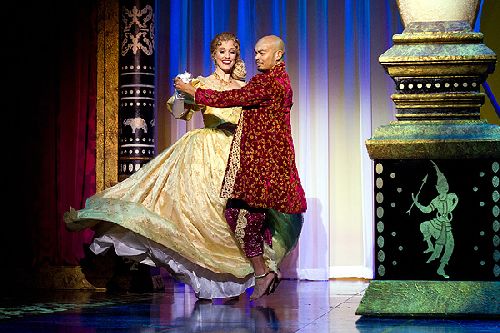“I have the A minor Quartet on the gramophone, and I find it quite inexhaustible to study. There is a sort of heavenly, or at least more than human gaiety, about some of his later things which one imagines might come to oneself as the fruit of reconciliation and relief after immense suffering; I should like to get something of that into verse before I die.”
T.S. Eliot, letter to Stephen Spender, March 1931
* * *
The Busch Quartet plays the third movement of Beethoven’s A Minor Quartet, Op. 132, recorded in 1937:
Archives for December 30, 2011
TT: Just so you’ll know
Mrs. T and I have spent the past week in Smalltown, U.S.A., where my mother is seriously ill. Her condition appears to have stabilized for now and she is resting as comfortably as can be expected, so we’re planning to return to New York on Sunday night, though we’re prepared to fly back to Smalltown on short notice.
To those of you who follow my Twitter feed and know about my mother’s condition, many thanks for your kind words. We’re coping as best we can, and the good people of the Clearview Nursing Center are taking wonderful care of my mother, as are David and Kathy, my brother and sister-in-law. These are hard times, but your concern is a continuing comfort.
TT: A King full of aces
In today’s Wall Street Journal drama column I review a Philadelphia show, the Walnut Street Theatre revival of The King and I. Here’s an excerpt.
* * *
Of all the Rodgers and Hammerstein musicals, “The King and I,” in which a high-handed Siamese potentate is given a lesson in democracy by a prim Welsh schoolmarm, is the one to which time has been kindest. Sixty years after it first opened on Broadway, “The King and I” remains both charming and–if done well–theatrically potent….
But the show, with its palatial décor and giant-sized cast, doesn’t lend itself to small-scale production, and if you cut corners when putting it on, the results will look cheap at best, amateurish at worst. Hence it is a real pleasure to report that Philadelphia’s Walnut Street Theatre has just mounted a strongly cast, newly choreographed revival of “The King and I” that looks anything but chintzy.
 The biggest difficulty facing any company that seeks to put its stamp on “The King and I” is getting out from under the shadow of Yul Brynner, who created the role of the King of Siam in 1951, starred in the 1956 film version of the show and continued to play the part onstage at regular intervals until his death in 1985. As a result, everybody who thinks of “The King and I” usually thinks first of Brynner, and most of the actors who have since assumed his role have evoked–deliberately or not–his performance, which was so distinctive as to be easily caricatured. Not Mel Sagrado Maghuyop, a Filipino-American musical-comedy singer who neither looks nor sounds like Brynner (he has a higher-pitched voice and is shorter than Rachel York, his leading lady). Mr. Maghuyop’s king is petulant to the point of childishness, which makes his climactic explosion of rage all the more frightening, and he is both physically lithe and an adept comedian….
The biggest difficulty facing any company that seeks to put its stamp on “The King and I” is getting out from under the shadow of Yul Brynner, who created the role of the King of Siam in 1951, starred in the 1956 film version of the show and continued to play the part onstage at regular intervals until his death in 1985. As a result, everybody who thinks of “The King and I” usually thinks first of Brynner, and most of the actors who have since assumed his role have evoked–deliberately or not–his performance, which was so distinctive as to be easily caricatured. Not Mel Sagrado Maghuyop, a Filipino-American musical-comedy singer who neither looks nor sounds like Brynner (he has a higher-pitched voice and is shorter than Rachel York, his leading lady). Mr. Maghuyop’s king is petulant to the point of childishness, which makes his climactic explosion of rage all the more frightening, and he is both physically lithe and an adept comedian….
Marc Robin, the director and choreographer, has daringly chosen to jettison Jerome Robbins’ well-known dances, turning “The Small House of Uncle Thomas” into a classical-style tutu-and-toe-shoes story ballet (Robbins staged it as a Thai-style dance-and-mime pastiche) and putting a comic spin on “Shall We Dance?” Though Robbins’ dance version of “Uncle Tom’s Cabin” was one of the most memorable pieces of choreography ever created for the Broadway stage, Mr. Robin’s miniature ballet is a lovely piece of work in its own right, and I liked his “Shall We Dance?” at least as much as Robbins’ more straightforward version….
* * *
Read the whole thing here.
Jerome Robbins’ “The Small House of Uncle Thomas,” from the 1951 film version of The King and I:
TT: Almanac
“Man must be sustained in suffering by a hope so high that no conflict with actuality can dash it–so high, indeed, that no fulfilment can satisfy it: a hope reaching out beyond this world.”
Friedrich Nietzsche, The Antichrist
